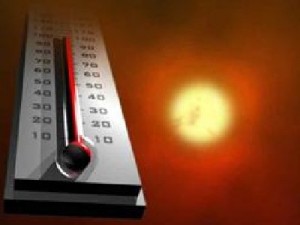Takin’ the Heat: Responding as Temperatures Rise

 With sweltering temperatures up the East Coast this week, there’s been lots of press coverage about a) how to keep cool and b) how to avoid blackouts. Before working at an electric company, I never understood what reliability alerts meant or the direct connection between high temperatures and blackouts. Here’s what I’ve learned from my time at Progress Energy*:
With sweltering temperatures up the East Coast this week, there’s been lots of press coverage about a) how to keep cool and b) how to avoid blackouts. Before working at an electric company, I never understood what reliability alerts meant or the direct connection between high temperatures and blackouts. Here’s what I’ve learned from my time at Progress Energy*:
Power companies have an available electric supply stored from their different generation facilities. This supply is sent out through the power lines to meet customer demand. As temperatures rise, customer demand rises as air conditioners turn on and begin running around the clock. The power company enters a reliability alert when the margin between available supply and customer demand becomes too narrow. When customer demand exceeds available supply, communities experience blackouts.
Electric companies work their tails off to prevent reliability alerts and have detailed load reduction plans to reduce customer demand and avoid blackouts. A number of reduction options have made the national news this week. Some examples include:
- Buying additional power from neighboring utilities.
- Reducing demand at internal facilities by turning off lights, powering down machinery and adjusting thermostats.
- Adjusting the supply available to retail and residential customers who have volunteered for programs where they received a rebate in exchange for allowing the company to reduce their supply.
- Public appeals to reduce electric consumption.
- Planned, rotating blackouts to evenly distribute the available supply to all service areas (this option is generally reserved for the most severe circumstances).
This summer has been hotter than normal with the pattern likely to continue. As temperatures rise, consider these suggestions from Progress Energy’s Lower My Bill Toolkit to reduce your energy expenses while being a good steward of your community’s available resources.
(Image found here)
*The views expressed on this blog posting are mine alone and do not necessarily reflect the views of my employer.


